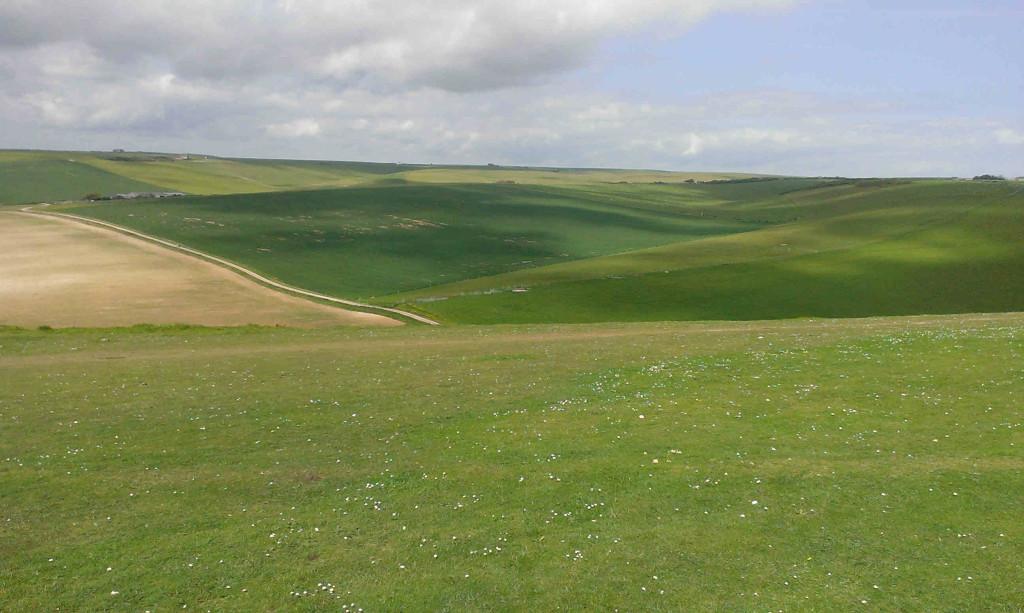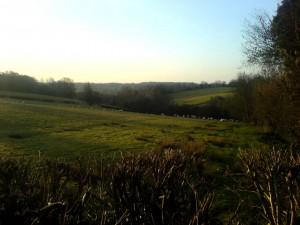Assessing significance and sensitivity of visual effects is a part of Landscape Visual Impact Assessment (LVIA). A LVIA can be a stand alone report or part of a Environmental Statement (ES) for a proposed development. Here at Landvision we specialise in LVIAs across Southern England, and Midlands, including Hampshire, Surrey, Kent and Sussex

Determining visual effects and their significance are an intrinsic part of the LVIA assessment. This includes; looking at the contribution of each effect on the visual receptors. For each visual effect, the nature and sensitivity of the visual receptors are important. A methodical approach is required. For each effect identified. the nature of the receptors is then assessed. The nature of the visual effects are examined together with the nature of the effects on views and visual amenity. These will be assessed by the Landscape Architect in order to determine the significance of the visual effects.
Visual receptors may be for example, be looking at historic features in the landscape, such as listed buildings or historic landscapes, archaeological sites, hill forts, castles, ancient hedgerows.
The latest LVIA Guidelines place a greater emphasis of the need to examine the history and culture underlying a landscape as part of the landscape sensitivity. This is due to the inherent sensitivity of historic landscapes which cannot be recreated once lost. All the United Kingdoms landscapes are historic, but there are some landscapes we feel are precious. These landscapes are protected with National Park, Area of Outstanding Natural Beauty or Special Landscape Area classification.
Equally, visitors to the South Downs National Park are highly sensitive to changes in the landscape.
Hence the need to conserve and enhance these highly sensitive landscapes through LVIA and ES.
Determining susceptibility to changes in views includes a need to define; who will be affected by a change in the view? What is the nature of their view and what is the occupation of the viewer? What will be the duration of the visual effect? What is the proportion of the view of a certain landscape will be affected? A receptor may, for instance, be a retired, a local resident who treasures a certain view which they look at every morning at breakfast. Conversely, a receptor may be working on a farm nearby, not so sensitive to a change in the view. It is thus important to ask, who will be affected by the change in view?
Where the receptor is located will also give clues which will help to determine the visual sensitivity. In a National Park, of high landscape sensitivity, walkers will have high sensitivity to changes in their views, due to their location within a very sensitive landscape. The susceptibility to change in views is compounded by the essence of their occupation of recreation and walking, which relies heavily on the nature of the landscape and views for a primary source of inspiration and relaxation.
Ancient woodlands, historic settlement patterns and old, moated manor houses are all visited by millions of receptors every year for the same reasons and are thus deemed highly sensitive to changes in their setting.
LVIAs by Landvision in a protected landscape such as a National Park, or ANOB in Hampshire, Surrey, Kent and Sussex will take sensitivity and susceptibility of visual receptors to change in views, into account, when appraising LVIA and visual receptor sensitivity.

Value attached to a certain landscape is important in determining sensitivity to change. There needs to be recognition of the value attached to a certain view. For instance a site of heritage value, that is widely visited by enthusiasts will have a greater sensitivity and the value attached to the views of such a site will be high.
The baseline landscape and the effects of the development on the baseline are investigated. This requires information on the value placed on the landscape, which may be historic in Hampshire or Sussex, its evolution to the present and the associations of the site with Hampshire or Sussex local history. The valued parts of History and Cultural heritage will be protected and suitable mitigation and enhancements will be identified as part of the Landscape and Visual Impact Assessments in Hampshire and Sussex.
The screening process by Landvision will consider characteristics of the project and the value placed on certain landscapes can be seen through notation in guidebooks, protection of the landscape using designations such as National Park or ANOB, references to certain landscapes in books and inspiration for paintings. What visual effects will the proposed development have on the on baseline landscape in Hampshire or Sussex? What will these be and can they mitigated for? Recognition of the value attached to certain views is important, just as the location, layout and components of the proposed development will be part of the LVIA. History and Cultural Heritage of Sussex are elements of this baseline assessment work in the latest guidelines for LVIA. The LVIA includes effects on the visual receptors who place importance on the visual amenity and landscapes associated with the settings of listed buildings and scheduled monuments, identifies in LVIA reports for developments in Hampshire and Sussex.
As part of the ES and LVIA reports, mitigation proposals and enhancement proposals may be required. Environmental Statement Reports and LVIA reports by Landvision will frequently describe mitigation and management of mitigation schemes as part of the LVIA and ES assessment reports. For further information; please go to the contacts page; or ring us on Landvision 01892 782200.
